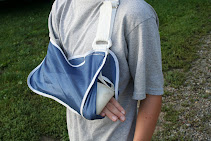Default judgment in a civil lawsuit happen when a defendant fails to appear before the court or fails to respond to summons. Generally, it is a binding judgment handed down by the court in favor of the plaintiff or the complainant.
The article, “A Lesson on Default Judgments”, posted in October 17, 2008, offers some advice on how to respond to default judgment and ask the court to “set aside” a default judgment.
In damages claim or tort lawsuit, the court often enters the amount of damages in the original complaint when a default judgment is made.
However, a defendant can have a default judgment vacated or set aside. Code of Civil Procedure section 473 provides the standards on how to ask the court to have such judgment vacated or set aside.
Under this section, a defendant may seek relief from default judgment provided he has a good reason for his failure to answer the complaint or defend the lawsuit.
In California, the courts allow and recognize the following grounds to have a default judgment set aside or vacated:
• Mistake – when a person knows the facts but has mistaken belief of the legal consequences of those facts
• Inadvertence – when inadvertence is the result of inattention or negligence
• Surprise- when a party is placed in an “injurious legal situation”
• Excusable neglect – this includes illness, failure to respond because you relied on your lawyer, failure to appear in trial because you relied on misinformation of a court officer
• You were not given “actual notice” to defend yourself – by actual notice, this means that a party genuinely knows of the litigation.
At any rate, you can avoid these hassles in legal procedures if you give yourself proper time to select a credible litigation lawyer to handle your case.
The article, “A Lesson on Default Judgments”, posted in October 17, 2008, offers some advice on how to respond to default judgment and ask the court to “set aside” a default judgment.
In damages claim or tort lawsuit, the court often enters the amount of damages in the original complaint when a default judgment is made.
However, a defendant can have a default judgment vacated or set aside. Code of Civil Procedure section 473 provides the standards on how to ask the court to have such judgment vacated or set aside.
Under this section, a defendant may seek relief from default judgment provided he has a good reason for his failure to answer the complaint or defend the lawsuit.
In California, the courts allow and recognize the following grounds to have a default judgment set aside or vacated:
• Mistake – when a person knows the facts but has mistaken belief of the legal consequences of those facts
• Inadvertence – when inadvertence is the result of inattention or negligence
• Surprise- when a party is placed in an “injurious legal situation”
• Excusable neglect – this includes illness, failure to respond because you relied on your lawyer, failure to appear in trial because you relied on misinformation of a court officer
• You were not given “actual notice” to defend yourself – by actual notice, this means that a party genuinely knows of the litigation.
At any rate, you can avoid these hassles in legal procedures if you give yourself proper time to select a credible litigation lawyer to handle your case.






